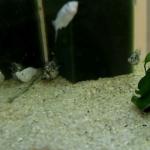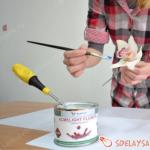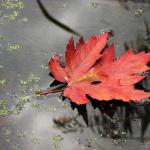Jasmine
Jasmine (lat. Jasminum) is an evergreen shrub that belongs to the angiosperm department, the dicotyledonous class, the order of the clear flowers, the olive family, the genus jasmine.
Jasmine: description, characteristics, photo. What does jasmine look like?
In appearance, this plant is easy to distinguish from other representatives of its genus: these are erect or climbing shrubs with a thin and smooth stem, which is covered with trifoliate, simple, dark green, pinnate leaves. The stem ends with large flowers of the correct form. Jasmine flowers (umbrella or solitary) are collected in corymbs, which, depending on the type of plant, are lateral or apical. The aroma of jasmine is very pleasant and gentle, but in a small room (for example, at home), the smell can become highly concentrated and lead to headaches.


The corolla of a jasmine flower is long, resembling a narrow tube, inside of which there are 2 thin threads that grow together and turn into a berry - this is the fruit of the plant, however, it is strictly forbidden to eat it. The flower in its color can be different - white, pink or yellow. The shade directly depends on the type of plant and the area where it grows.
Jasmine is a beautiful ampelous plant. With proper care, the lower part of its stem is gradually covered with wood, so the plant is often used as an ornamental decoration that blooms annually and does not need painstaking care.
Jasmine is often confused with the mock orange shrub, which belongs to the Hydrangea family. Here's a photo of a mock-up:
![]()
Types and varieties of jasmine, names and photos.
In nature, there are species and varieties of jasmine that differ in color, structure of the stem, leaves and flowers, as well as the height of the shrubs.
The following colors of this plant are distinguished:
- white jasmine;
- yellow jasmine;
- pink jasmine.



The genus of jasmine currently has about 300 species, each of which has features and nuances in care. The most common types are:
Flattened jasmine (lat. Jasminum decussatum).
This representative of the olive family is a small shrub. The leaves are light green, lanceolate and pinnate. The flowers of this type of jasmine are fragrant, beautiful, pale purple in color.

Shrub jasmine (lat. Jasminum fruticans) - upright type of jasmine, which is a bush 1.5 meters high. The stem is flexible, twig-like; branches are smooth and rather thin. The leaves are usually paired with two leaflets. Shrub jasmine blooms with semi-umbrellas, which are located on the side branches.

Jasmine Lerata (lat. Jasminum leratii).
The height of an adult jasmine shrub can reach up to 3.5 meters. Unlike other types of jasmine, Lerata is endowed with green and long stems, dark green lanceolate leaves, and small white flowers that have a pleasant minty smell.

Jasmine multiflorous or polyanthus (lat. Jasminumpolyanthum).
This shrub can be safely called climbing jasmine, as its branches are drooping and growing strongly in width. The height of an adult plant is 1-3 meters. The leaves, branches and stems of the multi-flowered jasmine are covered with fine hairs that give the shrub a gray-green hue. The flowers of this variety of jasmine look like stars and are collected in clusters. They are able to bloom along the entire length of the stem, as well as at its end. This type of jasmine blooms almost all year round, spreading a pleasant aroma.

Medicinal jasmine (white jasmine) (lat. Jasminum officinale) - climbing type of jasmine, which is endowed with thin, long and angular branches. Leaves are paired, smooth. The flowers are fragrant, white, growing on thin pedicels. As the name suggests, some parts of this jasmine species can be used as a medicinal raw material.

Jasmine sambac (Arabic or Indian jasmine) (lat. Jasminum sambac)- an evergreen climbing type of jasmine. The leaves are leathery, simple, oval or ovoid in shape, from 2 to 10 cm long. Jasmine sambac flowers are white, very fragrant, simple, semi-double or double, collected in few-flowered brushes. Single flowers are less common. The calyx of a jasmine flower is about 1 cm. Under favorable conditions, the flowering of some varieties can last all year round. The following varieties of jasmine sambac are distinguished – "Grand Duke of Tuscany", "Arab Knights", "Beauty of India", "Maid of Orleans", "Mali Chat".

Chinese jasmine (lat. Jasminum grandiflorum) – an evergreen species of jasmine, which is a shrub or liana up to 10 meters high with bright green leaves and very fragrant white flowers.

Where does jasmine grow?
Jasmine grows in the tropical regions of Australia, South America, Africa, Asia and the Mediterranean region. A shrub grows only in a warm climate, because it is only thanks to the heat that the flower blooms and multiplies. In Europe and Russia, 2 types of jasmine grow - white medicinal jasmine and yellow shrub jasmine.
When does jasmine bloom?
Jasmine blooms depending on its species at different times, however, most often abundant flowering begins in early or mid-June. Newly planted jasmine shrubs begin to bloom at 2-4 years old, but with proper care and constant feeding, the plant may begin to bloom a little earlier.

Jasmine: cultivation and care. Jasmine planting.
Many gardeners are wondering: "How to plant jasmine?". It is recommended to plant this plant in early spring or late autumn. The jasmine bush grows especially quickly and well on fertile land, as it does not like moisture stagnation and excessive groundwater.
Before planting jasmine, it is recommended to dig up the ground well to mix the upper and lower layers. Then you need to dig a hole, the depth of which will be at least 50 cm. In order for the jasmine to grow better, it is recommended to sprinkle the bottom of the hole with nitrophoska. When falling asleep roots, it is worth remembering that the root neck should be deepened by no more than 3 cm. After planting, the jasmine bush should be watered abundantly.
If you plant a bush that is already large in size, you can immediately tie it to a stick dug into the hole so that the jasmine grows even and tall, because many of its species are endowed with flexible stems that can take the wrong position at the initial stage of growth.

Jasmine: care, pruning, watering, top dressing.
In order for jasmine to please with magnificent flowering every year, it needs care, which consists in proper pruning, watering, feeding the bush and other activities:
- loosening the soil in the root circle- 2 times per summer;
- mulching;
- watering- in the summer heat, a young jasmine bush needs at least 30-40 liters of water in two days, otherwise its leaves will begin to wither quickly;
- wilted flower removal;
- annual thinning and pruning. Since a very dense jasmine bush with many shoots will not bloom well, it needs to be thinned out, which will form a strong young growth, which will produce many flowers. Jasmine pruning can be done both in early spring, while the plant has not yet had time to bloom, and after flowering. To rejuvenate the bush, strong jasmine branches are cut to half the length, and less developed ones are cut right off the ground. After that, the sections must be immediately treated with garden pitch. Throughout the summer, the bush needs to be watered and fed, and next spring, new shoots should be removed, leaving 2-3 sprouts on each stump. A completely renewed jasmine bush will begin to bloom only after 2 years.
![]()
- Jasmine dressing: in spring, the plant should be fed, so wood ash and nitrophoska should be added under the bushes. Jasmine also responds well to fertilizing with organic fertilizers - a bucket of manure must be diluted in water in a ratio of 1:10. For one plant, 15-20 liters of such top dressing will be enough every 20-25 days. As a mineral supplement for jasmine, a solution of 10 g of urea, 30 g of superphosphate, 15 g of potassium sulfate, diluted in 10 liters of water, is suitable.
- Protection of jasmine from pests and diseases: under unsuitable growing conditions, aphids or spider mites can settle on the shrub, which will infect jasmine leaves. To control insect pests, a diseased plant must be sprayed with a fungicide. Read more about aphids and methods of dealing with it.

Jasmine reproduction.
Answering the question of how to propagate jasmine, it should be noted that there is nothing difficult in this process, because this can be done in several ways:
- root layers;
- dividing the bush;
- cuttings;
- seeds.
If the first two methods do not present any particular problems, then it is worth learning more about the propagation of jasmine by cuttings and seeds.
In both cases, mixed soil is required, made up of two parts of peat and one part of leafy soil and humus. The lignified cuttings of the growth of the first year should be cut in the fall, stored in a dry basement or cellar, and planted in the ground in the spring. The lower cut of the jasmine cuttings should be oblique, and only 2-3 buds should remain on the surface of the soil. The soil must be constantly kept moist, and if you place these cuttings in a greenhouse, they will take root even faster.
When propagated by seeds, they must first be stratified (hardened by cold). In March, jasmine seeds should be placed in a container with soil and then lightly sprinkled with sand. Glass or a thick plastic film should be placed on top to prevent the soil from drying out. Jasmine seeds are often watered from a spray bottle or through a fine sieve, and the glass or film coating is rubbed and turned over. After 10 days, shoots will appear, which later will need to be dived and protected from the strong sun, and when they grow up, transplanted into open ground.





